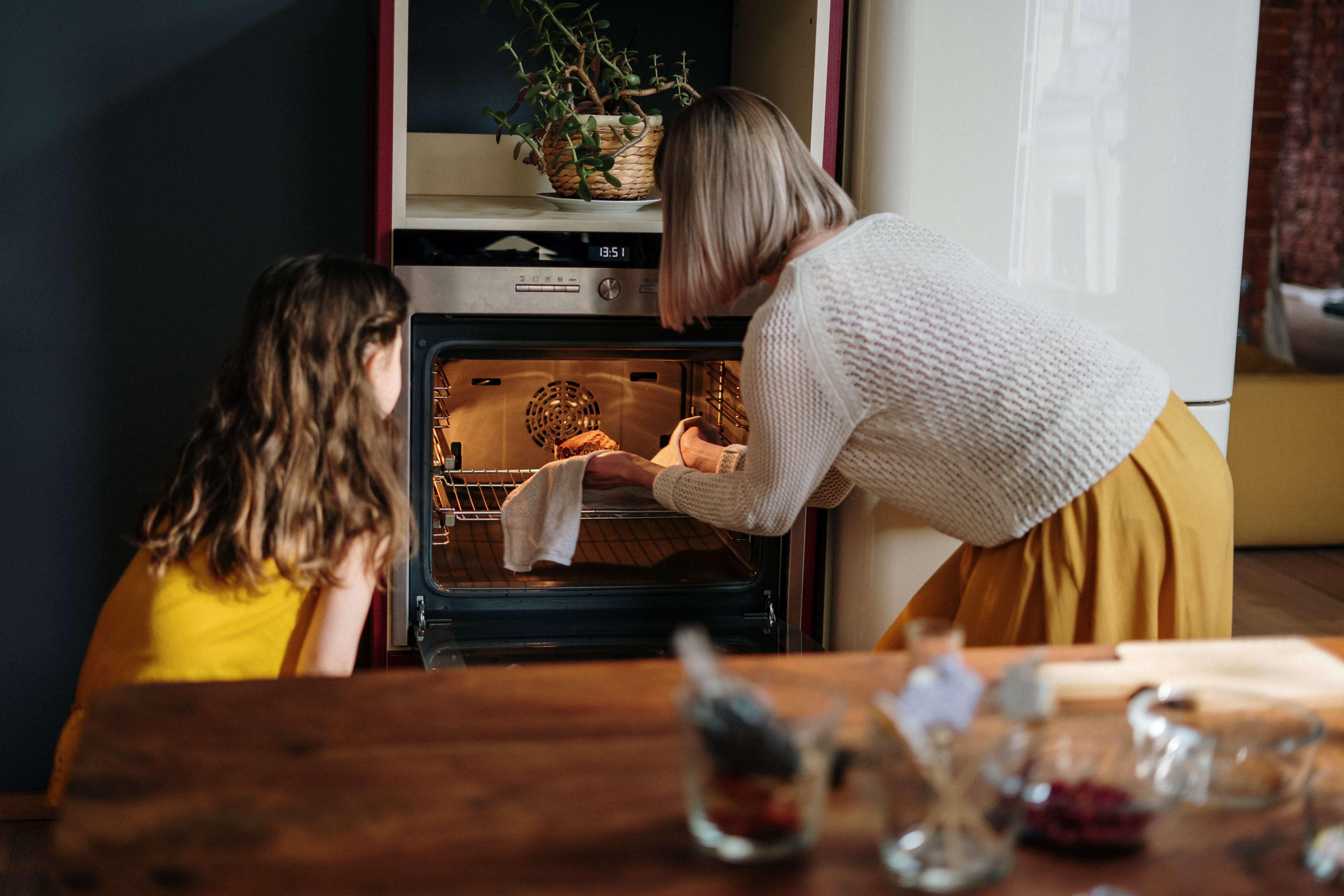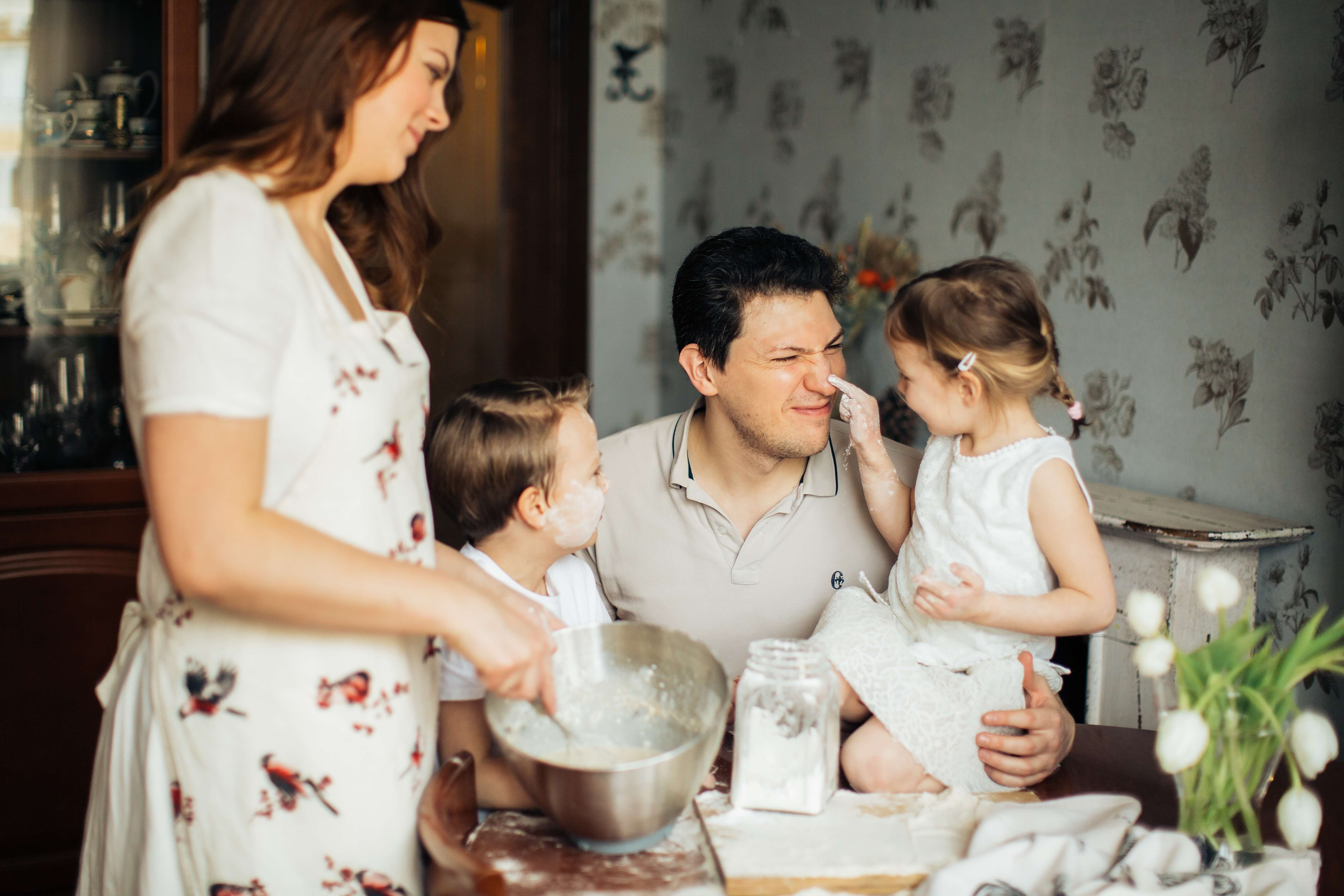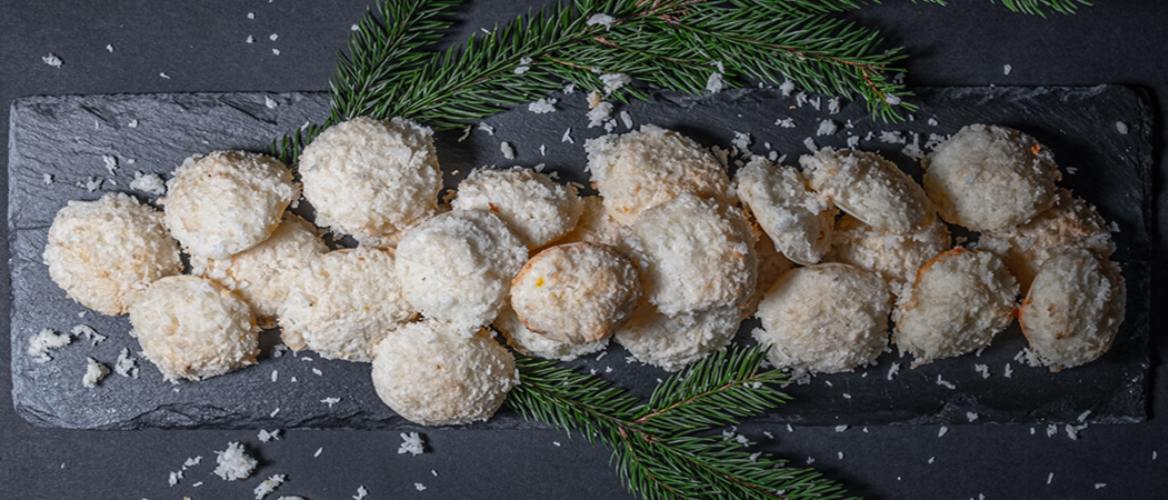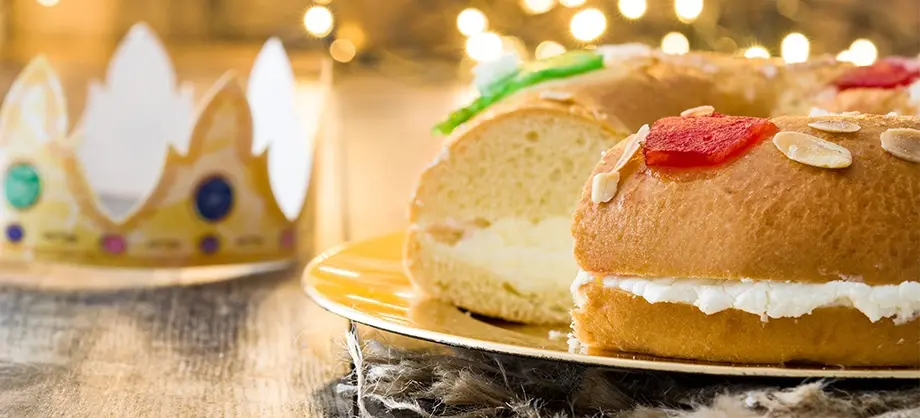December 30, 2020
January 4, 2021
Eaten so much that you need to be rolled out of your house? Well, get ready for more. It’s no shock to learn that ‘tis the season for the three F’s: family, fun and FOOD. Much like squirrels that hoard their food for winter, we stock up ahead of the Christmas holidays before wolfing it all down day after day until the new year kicks in. In Spain, however, the fun doesn’t end there. When most of our families back home are taking down the Christmas tree on the 6th of January and making plans to lose the extra pounds they’ve gained during the festive period, the Spanish are opening their gifts from the Three Kings and getting ready for a family lunch followed by a slice of Spain's Roscón de Reyes.
Roscón de Reyes in Spain… say what?
The Roscón de Reyes is a ring-shaped cake that is filled with cream or other sweet fillings (chocolate or custard) and garnished with coloured candied fruit imitating the jewels of the King’s crown. It is eaten in various regions throughout Spain (as well as Portugal, Mexico and Argentina) either in the morning of the 6th of January for breakfast and accompanied by coffee, and/or as dessert following a festive family lunch. If you’re looking for one this year, it’s relatively easy to buy them in any bakery or supermarket, or if you fancy trying your hand at making one yourself, check out this recipe in English by Spanish Sabores.

The luck of the draw
More than just a sponge cake with a creamy filling, the Roscón de Reyes in Spain contains little objects/figurines that carry more than one meaning, depending on the region and/or family. Traditionally, each Roscón contains a bean (haba) and a king figure. This is where the luck of the draw comes in - as the cake is cut into slices and shared out, whoever gets the piece containing the bean has to pay for the entire cake, but naturally, as you can imagine, this doesn’t tend to be enforced by families. In exchange, whoever is lucky enough to find the king figure gets to be “king for the day” and have his or her every whim catered to.

A sugary treat with pagan origins
According to the blog by 20Minutos, the Roscón de Reyes, like many religious traditions, is embedded in pagan heritage that develops over the course of history and becomes incorporated into various religions. In fact, the Roscón de Reyes dates back to the 2nd century B.C., when "Las Saturnales", a pagan celebration in honour of Saturn, the god of crops, was held. Everyone, rich, poor and slaves alike, celebrated the end of the darkest period of the year and the beginning of a time bathed in light. At the time, it was common to prepare various dishes for the celebration, although the most popular of all was a honey-based cake in which some nuts, dates and figs were hidden.

Fast forward a century, a bean was added to the same cake, symbolising prosperity and fertility at that time. This meant that whoever found the bean was promised prosperity for the rest of the year and served as king of kings for a short period of time. However, the tradition was short lived. When the Christian religion gained momentum and pagan celebrations such as the Saturnals were lost, the custom of eating the cake with the hidden bean also disappeared, albeit temporarily. A few centuries on, the traditional cake with beans made its way back to Spain; however, gold coins were also added, meaning that whoever found the coins won the prize, while whoever found the bean was doomed to have bad luck over the course of the year.
We’ve all been stuffing our faces from the 24th of December, some perhaps even earlier, and are likely looking forward to getting back to the gym and healthy eating… but, if you’re planning on staying in Spain and celebrating Reyes with friends or family in the first week of 2021, make sure to join in on the celebration and indulge in a Roscón de Reyes. You might even live out a childhood fantasy of becoming a king for the day. ¡Felices Reyes!
.png?width=344&height=67&name=logo_caser%20(2).png)







Let Us Know What You Thought about this Post.
Put your Comment Below.